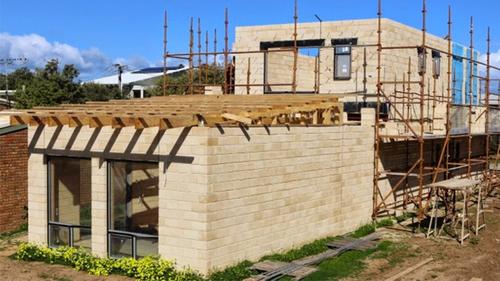Business
Homebuilders Urged to Embrace Alternative and Innovative Building Technologies for a Sustainable Future

As South Africa continues to face high interest rates and rising construction costs, the demand for affordable and sustainable housing solutions is more pressing than ever. Homebuilders are being urged to explore Alternative Building Technologies (ABT) and Innovative Building Technologies (IBT) as viable solutions to meet these challenges while contributing to a more sustainable future.
What Are ABT and IBT?
According to Portia Sebulela, the Head of Marketing, Communications, and Stakeholder Relations at the National Home Builders Registration Council (NHBRC), ABT and IBT represent unconventional building methods and materials that offer notable advantages, such as reduced construction time, lower lifecycle costs, and a smaller environmental footprint. These methods, while not yet covered under the National Building Regulations, are assessed for their fitness by Agreement SA, the certification body responsible for ensuring their quality and safety.
“ABT and IBT offer innovative architectural options, providing builders with more flexibility and efficiency,” Sebulela explained. “These technologies are key in addressing the growing need for sustainable and affordable housing.”
Challenges in the Housing Sector
The South African housing sector is grappling with economic uncertainties, rising construction costs, and bureaucratic delays. In March, the Social Housing Regulatory Authority (SHRA) identified these factors as primary risks to the housing market. To tackle these challenges, the SHRA called for policy alignment, stronger industry partnerships, and financial commitments to support housing projects.
The NHBRC has played a pivotal role in regulating the industry, ensuring that homebuilders comply with set standards. However, Sebulela highlighted that the non-categorization of homebuilders remains an ongoing challenge. Fortunately, the new Housing Consumer Protection Bill, signed into law in January 2025, will address this issue by categorizing homebuilders based on their competence levels.
The Role of Technology in Homebuilding
While the current housing environment poses challenges, the integration of smart technologies and sustainable building practices offers a ray of hope. Consumers are increasingly opting for smaller, more sustainable homes, and the rise of cluster housing is a testament to this shift. Furthermore, the emergence of smart cities in South Africa showcases the growing incorporation of technology into the housing sector.
The NHBRC continues to advocate for the use of ABT and IBT, along with training for relevant stakeholders, to encourage innovation and ensure that the building standards meet both local and global challenges.
Collaboration for a Sustainable Future
The NHBRC has emphasized that collaboration across government, finance, and the private sector is critical for fostering innovation, upholding compliance, and maintaining quality in the homebuilding industry. Sebulela believes that with a concerted effort, homebuilders can adopt ABT and IBT to meet the increasing demand for sustainable housing.
“Through continued collaboration, we can improve housing standards and offer more affordable, environmentally friendly options for South Africans,” she said.
As the homebuilding sector embraces these alternative and innovative technologies, the path toward a sustainable future looks promising. By working together, stakeholders in the housing market can build a more resilient and future-ready housing landscape for generations to come.
{Source: IOL}
Follow Joburg ETC on Facebook, Twitter , TikTok and Instagram
For more News in Johannesburg, visit joburgetc.com















